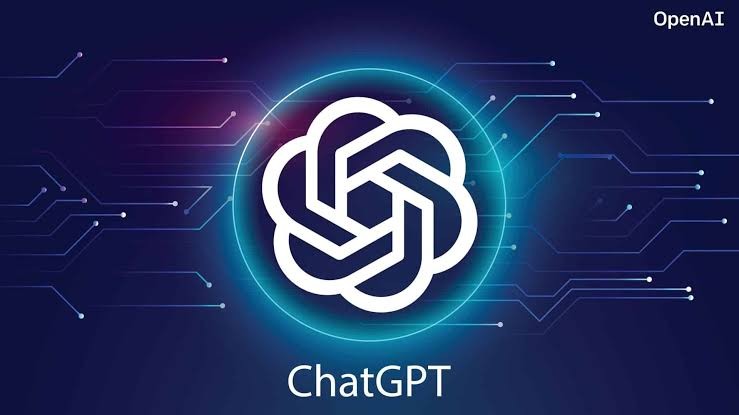
The rise of artificial intelligence has transformed how many companies manage their workflow, creating new avenues for both efficiency and innovation. A recent survey found that 75 percent of small business owners currently use AI tools in their operations—and it’s not hard to see why. Eighty-two percent feel that AI makes running and scaling their business easier, while 93 percent agree it helps them save money and boost revenue.
One of the most revolutionary AI technologies is the Generative Pre-Trained Transformer (GPT). This machine learning tool allows businesses to conduct target audience research seamlessly, create successful marketing plans, and churn out valuable content.
Platforms such as ChatGPT or Google Bard have millions of users worldwide, but some companies are starting to explore the idea of custom GPTs tailored to their specific needs. Here’s why business owners should not overlook the benefits and opportunities of building a custom GPT—plus, how to develop it from scratch and take necessary precautions to ensure the most effective, responsible, and ethical usage.
The Case for Building a Custom GPT
OpenAI, the tech conglomerate behind ChatGPT, launched its GPT Store in January 2024. This virtual ecosystem allows businesses to formulate custom GPT models and sell or share them with the general public. ChatGPT Team is another new innovation from OpenAI that allows companies to build their own private, secure GPTs for internal use only. So, what’s the advantage of a custom GPT? Let’s unpack this question below.
Tailored Solutions
One compelling reason to invest in a custom GPT is the ability to develop features that make sense for your particular business. Generic models might not capture industry-specific nuances or resolve your team’s, customers, and other stakeholders’ unique challenges. With a custom GPT, you can generate content or execute solutions that feel relevant to your domain, resulting in more accurate and contextually-aware outputs.
Robust Security
If your business handles sensitive information, using pre-trained GPT models can raise concerns about data privacy or other security measures. However, a custom GPT lets organizations train the model on internal data without using any external sources. An internal GPT keeps confidential information within your business’s control, lowering the risks associated with data breaches or unauthorized access—and nurturing more consumer trust.
High Performance
Custom GPTs can also be optimized to automate highly specialized tasks, which could increase performance efficiency. Instead of relying on a formulaic GPT model that performs one set of functions, you can design a custom GPT to excel in targeted areas that will streamline your unique operational needs. This results in faster processing times, less resource consumption, fewer manual requirements, and a substantial productivity boost.
The Process of Creating a Custom GPT
Now that you understand why custom GPTs are so beneficial, it’s time to build your own. This process might seem intimidating, but when you break it down into incremental steps, anyone can create, maintain, and operate a custom GPT. Use the following blueprint to take your business’s custom GPT model from a concept to a strategic reality.
Define Your Target Objectives
Identify the tasks, goals, and scope you aim to achieve through a custom GPT. What do you want this model to excel in? What are the business outcomes you’re hoping to reach with the platform? How will you measure its efficacy and success? Determining this in advance will pave the way for a final product that aligns with your objectives.
Gather All the Necessary Data
Comb through your available datasets to gather all metrics and information that feel current, relevant, and accurate to the context of your specific domain. Look for high-quality data points from diverse sources to generate the most effective outputs from your custom GPT platform. Then, process this data to remove noise, create a smooth, consistent feedback loop, and establish a format for the GPT model to train on quickly.
Test and Refine Each Function
Once you’ve trained the GPT on this dataset, run a series of tests with real users (pulled from your team members) to evaluate whether all the features work correctly. First-time glitches are normal, so don’t sweat it if certain functions still need improvement—consider this a valuable opportunity to recalibrate and refine until your model is seamless.
Deploy the GPT Model for Use
Design and activate the custom GPT for practical use—this process can be intricate, but the GPT Store makes it much more manageable. The user-friendly interface walks you through each step, delivering the resources to create a platform tailored to your business niche and employee or consumer needs. After deploying this custom GPT, monitor its performance and make continual adjustments to maximize efficiency, accuracy, and reliability.
The Precautions to Take with a Custom GPT
As effective as automated GPT integration is for your business workflow, it’s also not foolproof. According to a recent survey, 75 percent of consumers are skeptical about inaccuracies and misinformation from these tools, so it’s vital to take precautions when building your custom GPT model. Not only will this enhance the platform’s functionality, but it will also help you avoid major ethical concerns. Here are a few considerations to bear in mind.
Bias Mitigation
AI technologies can be prone to bias, and custom GPTs are no exception. Business owners must actively work to detect potential biases in the training data and then make adjustments to minimize the overall risk of bias. Performing these audits will ensure the model consistently generates inclusive, unbiased outputs for all user demographics.
Ethical Guidelines
Harness your organization’s core values to inform the development, maintenance, and usage of custom GPTs. Be transparent about its capabilities and limitations, and establish a clear set of ethical parameters to govern the internal operations of your model. This effort will curb misleading information and help reinforce credibility with the target audience.
User Education
When deploying a custom GPT for your business, communicate your expectations for its management. Educate your team members on responsible use so that they can provide careful, intentional human oversight. Conscientious supervision and continuous education will make sure this platform works in the most efficient, trustworthy manner.
Take Advantage of Custom GPTs in 2024 and Beyond
A custom GPT model is one of the most strategic investments for business owners in 2024. These tools will help you integrate secure, automated solutions uniquely tailored to your organization. In fact, they might just be the new frontier of artificial intelligence.
RELATED ARTICLES
Latest Articles
 Laura Ingraham Husband James Reyes: Why …In BiographyApril 17, 2025Laura Ingraham is a well-known conservative […]
Laura Ingraham Husband James Reyes: Why …In BiographyApril 17, 2025Laura Ingraham is a well-known conservative […] Zach Top Wife Mystery Solved! Meet the W…In BiographyApril 16, 2025Zach Top’s music has that classic country feel that […]
Zach Top Wife Mystery Solved! Meet the W…In BiographyApril 16, 2025Zach Top’s music has that classic country feel that […] What Is a Parcel Locker? The Game-Change…In TechnologyApril 16, 2025Missing packages? Porch pirates? Missed delivery slips […]
What Is a Parcel Locker? The Game-Change…In TechnologyApril 16, 2025Missing packages? Porch pirates? Missed delivery slips […] Dawn Staley Relationship Rumors: What’s …In BiographyApril 15, 2025When it comes to iconic figures in sports, Dawn Staley […]
Dawn Staley Relationship Rumors: What’s …In BiographyApril 15, 2025When it comes to iconic figures in sports, Dawn Staley […] How Window Tinting Affects Driver Visibi…In TechnologyApril 11, 2025Introduction: Beyond Style — The Functional Side of […]
How Window Tinting Affects Driver Visibi…In TechnologyApril 11, 2025Introduction: Beyond Style — The Functional Side of […] Vaishnav Tej Wife, Age, Family, Girlfrie…In BiographyApril 11, 2025Vaishnav Tej wife: There is always more to know about […]
Vaishnav Tej Wife, Age, Family, Girlfrie…In BiographyApril 11, 2025Vaishnav Tej wife: There is always more to know about […] Nick Sandmann Net Worth, Biography, Heig…In BiographyApril 11, 2025Young Nick Sandmann, catapulted into the media […]
Nick Sandmann Net Worth, Biography, Heig…In BiographyApril 11, 2025Young Nick Sandmann, catapulted into the media […] Cold War Timeline: The Real Story Behind…In HistoryApril 4, 2025If you’ve ever wondered how we ended up with the […]
Cold War Timeline: The Real Story Behind…In HistoryApril 4, 2025If you’ve ever wondered how we ended up with the […]
stopie.com is a participant in the Amazon Services LLC Associates Program, an affiliate advertising program designed to provide a means for sites to earn advertising fees by advertising and linking to Amazon.com.
Clicking on an Amazon link from stopie.com does not increase the cost of any item you purchase.
We will only ever link to Amazon products that we think our visitors may be interested in and appreciate learning more about.



